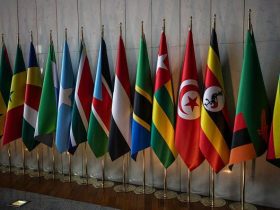South Africa’s spectrum regulator, the Independent Communication Authority of South Africa (ICASA), is expected to make a decision in the coming months on designating the lower 6 GHz radio spectrum 5925-6425 MHz) for licence-exempt use in line with the African Telecommunication Union’s July 2021 recommendation.
Permitting Wi-Fi to access lower 6 GHz radio spectrum ensures that countries’ economies remain competitive on the regional stage as next generation Wi-Fi 6 and 6E technologies, capable of boosting public services, enhancing business operations, and seamlessly connecting citizens are adopted.
Kenya has just announced its implementation of the ATU recommendation, while Namibia and Mauritius are concluding public consultations with the intention of doing so.
The Dynamic Spectrum Alliance (DSA), a global organisation dedicated to promoting spectrum sharing innovation, suggests that South Africa could go a step further and unlock the full potential of Wi-Fi by allocating the entire 6 GHz bandwidth (5925-7125 MHz) for Wi-Fi use.
Wireless internet service providers require access to the full 6 GHz band to deliver supercharged digital services that would enhance South Africa’s urban and rural broadband coverage, improve internet access and affordability for citizens, and facilitate faster speeds with greater reliability for businesses.
According to research carried out for the DSA in 2021, if decision-makers designate the entire 6 GHz band for Wi-Fi use, the South African economy could grow by an additional US$76.5 billion by 2031. Additionally, the study projected that a further 1.5 million South African citizens will be able to gain access to the Internet through affordable paid service and free access over hot spots by 2031.
Martha Suarez, President of the Dynamic Spectrum Alliance, which is advocating stronger Wi-Fi, said:
“South African citizens, enterprises, and the nation’s economy stand to benefit enormously from unlocking the full potential of Wi-Fi.
“However, this can only be achieved through designating the full 6 GHz band for Wi-Fi use.
“Many countries, including the Brazil, Canada, Saudi Arabia, South Korea and the United States, have already made the full 6 GHz band available for Wi-Fi use in order to empower the digital transformation of all sectors of the economy and public services by enabling faster internet speeds, lower latency connectivity and reducing the risk of interference.”
























Leave a Reply